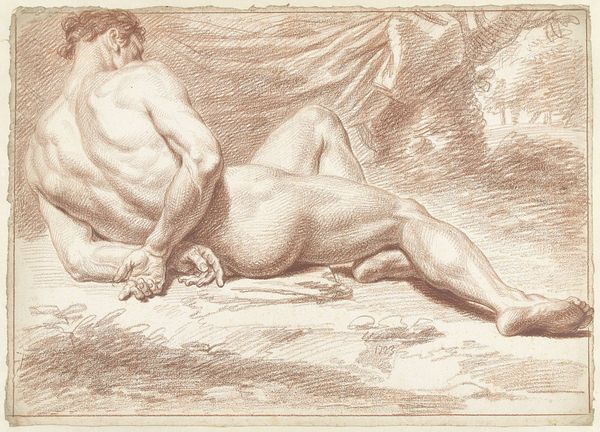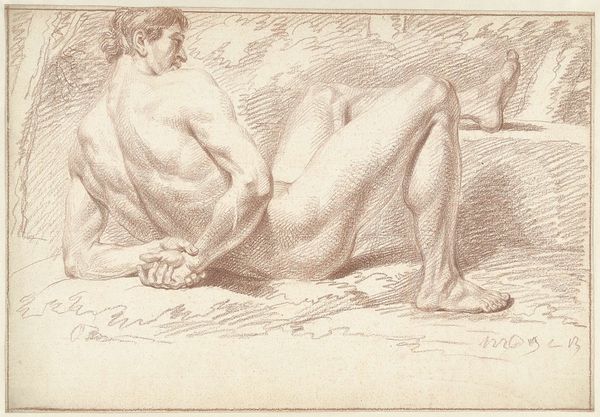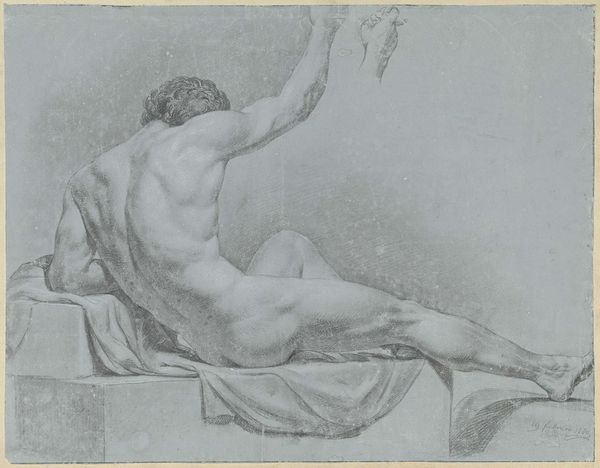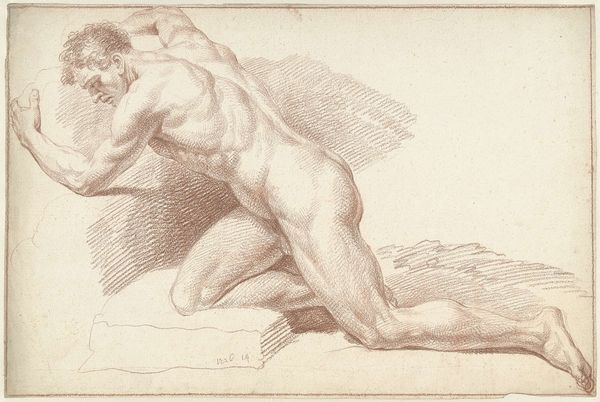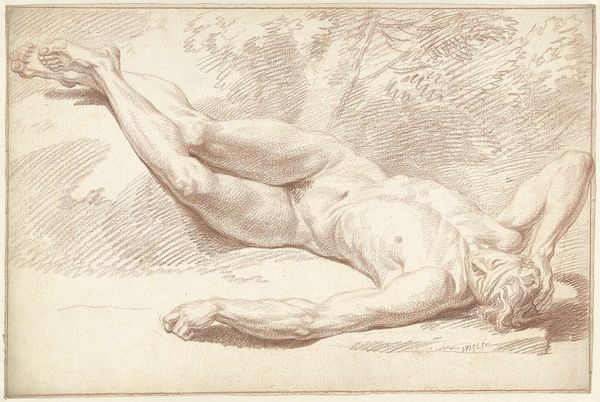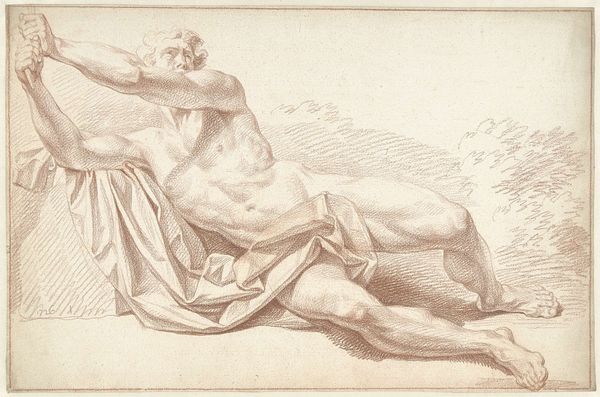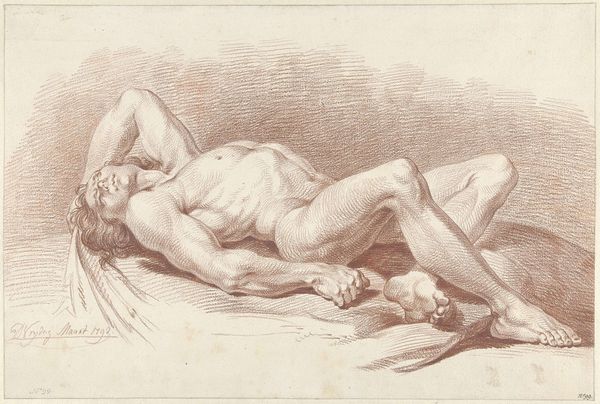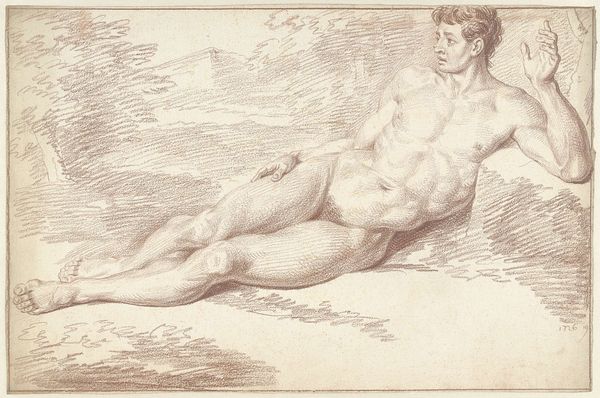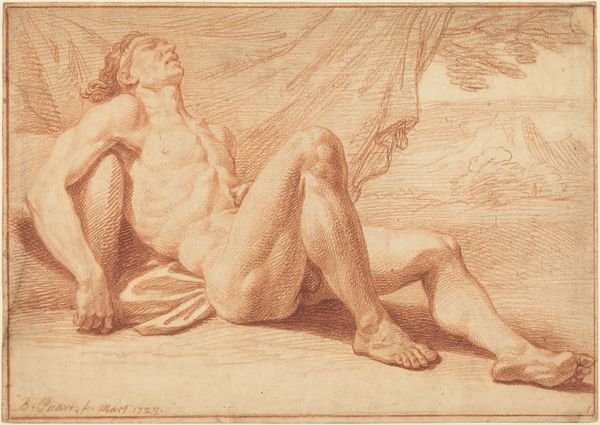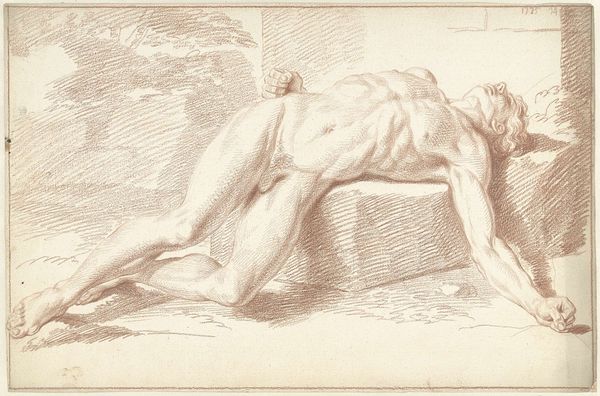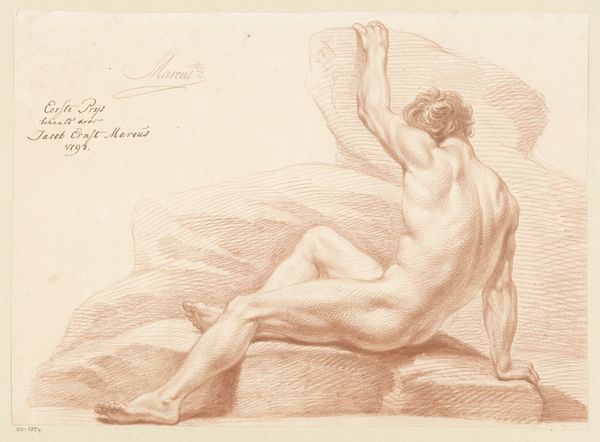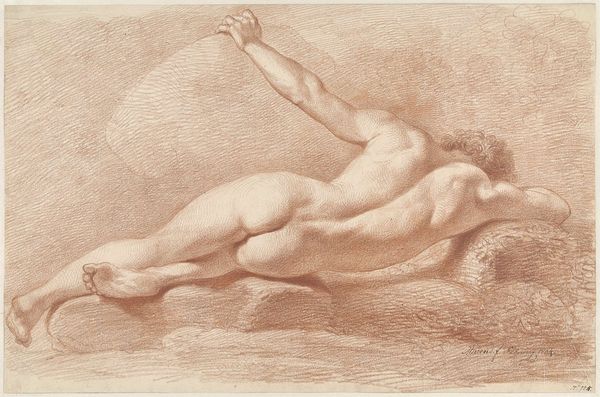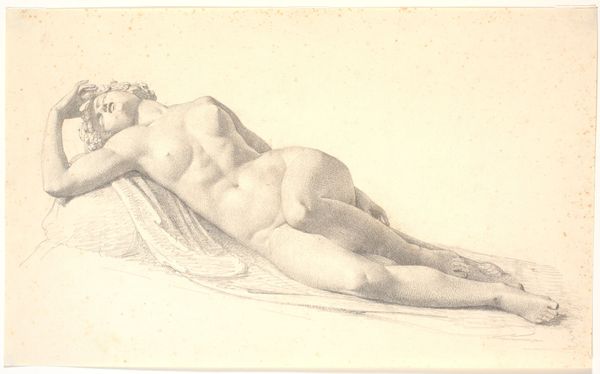
drawing, pencil
#
drawing
#
pencil sketch
#
pencil drawing
#
pencil
#
genre-painting
#
academic-art
#
nude
Dimensions: height 315 mm, width 471 mm
Copyright: Rijks Museum: Open Domain
Editor: This is "Mannelijk naakt, liggend, op de rug gezien," or "Male Nude, Lying Down, Seen from the Back" by Louis Fabritius Dubourg, made sometime between 1703 and 1775. It's a pencil drawing. There's something very classical about the pose, but also something vulnerable about presenting the figure from this angle. How do you interpret this work? Curator: This drawing offers a lens through which to examine the historical construction of masculinity and the male gaze. Dubourg's choice to depict the male nude from behind, seemingly relaxed yet undeniably posed, begs us to consider whose gaze this is for. Is it intended for a male patron, thus reinforcing a homoerotic subtext, or is it meant to titillate a presumed female viewer, subtly challenging gendered power dynamics within the artistic sphere? The idealized physique also speaks volumes about the era’s obsession with classical ideals. Editor: So, you're suggesting the artist may have been trying to challenge the status quo through the subject matter? Curator: Not necessarily challenge outright, but certainly engage with prevailing ideologies around gender, beauty, and power. We must question who had access to such imagery and what purpose it served. How does this drawing intersect with larger discourses about colonialism, class, and representation of the human form during the 18th century? These are crucial questions to explore. The male form becomes another landscape that’s up for grabs and to be defined through the European sensibility. Editor: It's fascinating to think about how the gaze affects how we see and interpret art, especially older pieces like this one. Curator: Exactly. Recognizing art as an instrument of ideology requires a critical approach.
Comments
No comments
Be the first to comment and join the conversation on the ultimate creative platform.
